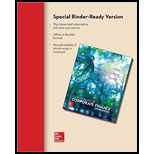
a)
To compute: The value of Publication IR to Company B.
Introduction:
Merger is the complete absorption of one company by another company. The acquiring company acquires all the assets and liabilities of the acquired firm and acquiring firm retains its name and identity. The acquired firm ceases to exist as a separate business entity after a merger.
a)
Answer to Problem 14QP
The value of Publications I to Company B is $9,857,250.
Explanation of Solution
Given information:
“Company B” is analysing the purchase of “Publications I”. Company B expects that earnings and dividends of Publications I to grow at a constant rate of 5% every year. Because of synergy, Company B’s growth rate will increase to 7% each year.
The price earnings ratio of Company B and Publications I are 14.5% and 9.2% respectively. The outstanding shares of Company B and Publications I are $1,400,000 and $195,000 respectively. The earnings of Company B and Publications I are $4,300,000 and $705,000 respectively and the dividends of Company B and Publications I are $1,075,000 and $375,000 respectively.
Formula to calculate the value of Publications I to Company B:
Calculate the value of Publications I to Company B:
Hence, the value of Publications I to Company B is $3.61538 per share.
Formula to calculate the share price of Target Company (I Publications):
Calculate the share price of Target Company (I Publications):
Hence, the share price of the target company is $33.261496.
Formula to calculate the dividend per share:
Calculate the dividend per share:
Hence, the dividend of Publications I is $1.923.
Formula to calculate the required
Calculate the required rate of return for the target company’ shareholders:
Hence, the required return of Publications I is 11.07%.
Formula to calculate the share price of the target company with new growth rate:
Calculate the share price of the target company with new growth rate:
Hence, the share price of the target company is $50.55.
Formula to calculate the value of Publications I to Company B:
Calculate the value of Publications I to Company B:
Hence, the value of Publications I to Company B is $9,857,250.
b)
To compute: The gain of Company B from the acquisition.
Introduction:
Merger is the complete absorption of one company by another company. The acquiring company acquires all the assets and liabilities of the acquired firm and acquiring firm retains its name and identity. The acquired firm ceases to exist as a separate business entity after a merger.
b)
Answer to Problem 14QP
Company B’s gain from acquisition is $3,371,258.28.
Explanation of Solution
Given information:
“Company B” is analysing the purchase of “Publications I”. Company B expects that earnings and dividends of Publications I to grow at a constant rate of 5% every year. Because of synergy, Company B’s growth rate will increase to 7% each year.
The price earnings ratio of Company B and Publications I are 14.5% and 9.2% respectively. The outstanding shares of Company B and Publications I are $1,400,000 and $195,000 respectively. The earnings of Company B and Publications I are $4,300,000 and $705,000 respectively and the dividends of Company B and Publications I are $1,075,000 and $375,000 respectively.
Formula to calculate Company B’s gain from the acquisition:
Calculate Company B’s gain from the acquisition:
Hence, Company B’s gain from acquisition is $3,371,258.28.
c)
To compute: The
Introduction:
Merger is the complete absorption of one company by another company. The acquiring company acquires all the assets and liabilities of the acquired firm and acquiring firm retains its name and identity. The acquired firm ceases to exist as a separate business entity after a merger.
c)
Answer to Problem 14QP
The NPV of the acquisition is $2,447,250.
Explanation of Solution
Given information:
“Company B” is analysing the purchase of “Publications I”. Company B expects that earnings and dividends of Publications I to grow at a constant rate of 5% every year. Because of synergy, Company B’s growth rate will increase to 7% each year.
The price earnings ratio of Company B and Publications I are 14.5% and 9.2% respectively. The outstanding shares of Company B and Publications I are $1,400,000 and $195,000 respectively. The earnings of Company B and Publications I are $4,300,000 and $705,000 respectively and the dividends of Company B and Publications I are $1,075,000 and $375,000 respectively.
Formula to calculate the NPV of the acquisition, if Company B offers $38 in cash for each share of Publications I:
Calculate the NPV of the acquisition, if Company B offers $38 in cash for each share of Publications I.
Hence, the NPV of the acquisition at $38 offer price is $2,447,250.
d)
To compute: The maximum bidding price that Company B will be willing to pay for Publications I.
Introduction:
Merger is the complete absorption of one company by another company. The acquiring company acquires all the assets and liabilities of the acquired firm and acquiring firm retains its name and identity. The acquired firm ceases to exist as a separate business entity after a merger.
d)
Answer to Problem 14QP
The maximum bid price is $50.55.
Explanation of Solution
Given information:
“Company B” is analysing the purchase of “Publications I”. Company B expects that earnings and dividends of Publications I to grow at a constant rate of 5% every year. Because of synergy, Company B’s growth rate will increase to 7% each year.
The price earnings ratio of Company B and Publications I are 14.5% and 9.2% respectively. The outstanding shares of Company B and Publications I are $1,400,000 and $195,000 respectively. The earnings of Company B and Publications I are $4,300,000 and $705,000 respectively and the dividends of Company B and Publications I are $1,075,000 and $375,000 respectively.
Formula to calculate the maximum bid price:
Hence, Company B’s maximum bid price is $50.55.
e)
To compute: The NPV of the acquisition, if Company B was offered $205,000 of its shares for the stock outstanding of Publications I.
Introduction:
Merger is the complete absorption of one company by another company. The acquiring company acquires all the assets and liabilities of the acquired firm and acquiring firm retains its name and identity. The acquired firm ceases to exist as a separate business entity after a merger.
e)
Answer to Problem 14QP
The NPV is $634,300.
Explanation of Solution
Given information:
“Company B” is analysing the purchase of “Publications I”. Company B expects that earnings and dividends of Publications I to grow at a constant rate of 5% every year. Because of synergy, Company B’s growth rate will increase to 7% each year.
The price earnings ratio of Company B and Publications I are 14.5% and 9.2% respectively. The outstanding shares of Company B and Publications I are $1,400,000 and $195,000 respectively. The earnings of Company B and Publications I are $4,300,000 and $705,000 respectively and the dividends of Company B and Publications I are $1,075,000 and $375,000 respectively.
Formula to compute the EPS of Company B:
Calculate the EPS of Company B:.
Hence, the EPS of Company B is $3.07143.
Formula to calculate the share price of Company B:
Calculate the share price of Company B:
Hence, the share price of Company B is $44.5357.
Formula to calculate the market value of Company B:
Calculate the market value of Company B:
Hence, the market value of Company B is $62,349,980.
Formula to calculate the price of the stock in the merged firm:
Calculate the price of the stock in the merged firm:
Hence, the price of the merged firm stock is $44.99.
Formula to calculate the NPV:
Calculate the NPV:
Hence, NPV is $634,300, if Company B offers 205,000 shares in exchange for outstanding stock of Publications I.
f)
To discuss: Whether the acquisition must be attempted and the acquisition that must be tried.
Introduction:
Merger is the complete absorption of one company by another company. The acquiring company acquires all the assets and liabilities of the acquired firm and acquiring firm retains its name and identity. The acquired firm ceases to exist as a separate business entity after a merger.
f)
Explanation of Solution
Given information:
“Company B” is analysing the purchase of “Publications I”. Company B expects that earnings and dividends of Publications I to grow at a constant rate of 5% every year. Because of synergy, Company B’s growth rate will increase to 7% each year.
The price earnings ratio of Company B and Publications I are 14.5% and 9.2% respectively. The outstanding shares of Company B and Publications I are $1,400,000 and $195,000 respectively. The earnings of Company B and Publications I are $4,300,000 and $705,000 respectively and the dividends of Company B and Publications I are $1,075,000 and $375,000 respectively.
Yes, the acquisition should go further, and Company B should offer cash of $38 for each share of Publications I.
g)
To compute: The NPV, if the outside financial consultants of Company B feel that the growth rate is very optimistic at 7% and it is realistic at 6%.
Introduction:
Merger is the complete absorption of one company by another company. The acquiring company acquires all the assets and liabilities of the acquired firm and acquiring firm retains its name and identity. The acquired firm ceases to exist as a separate business entity after a merger.
g)
Answer to Problem 14QP
The reduction in growth rate, results in positive NPV for cash offer and negative NPV for stock offer.
Explanation of Solution
Given information:
“Company B” is analysing the purchase of “Publications I”. Company B expects that earnings and dividends of Publications I to grow at a constant rate of 5% every year. Because of synergy, Company B’s growth rate will increase to 7% each year.
The price earnings ratio of Company B and Publications I are 14.5% and 9.2% respectively. The outstanding shares of Company B and Publications I are $1,400,000 and $195,000 respectively. The earnings of Company B and Publications I are $4,300,000 and $705,000 respectively and the dividends of Company B and Publications I are $1,075,000 and $375,000 respectively.
Formula to calculate the share price of the target company with changed growth rate:
Calculate the share price of the target company with changed growth rate.
Hence, the share price of the target company with changed rate of growth is $40.20.
Formula to calculate the value of Publications I to Company B:
Calculate the value of Publications I to Company B:
Hence, the value of Publications I to Company B is $7,839,000.
Formula to calculate Company B’s gain from acquisition:
Calculate Company B’s gain from acquisition:
Hence, the gain is $6,485,991.72.
Formula to calculate the NPV of the acquisition, if Company B offers $38 in cash for each share of Publications I.
Calculate the NPV of the acquisition, if Company B offers $38 in cash for each share of Publications I.
Hence, the NPV for cash is 429,000.
Formula to calculate the price of the stock in the merged firm:
Calculate the price of the stock in the merged firm:
Hence, the price of the merged stock firm is $43.73.
Formula to calculate the NPV for stock offer:
Calculate the NPV for stock offer:
Note:
- EPS represents Earnings Per Share
- NPV represents Net
Present Value - P represents Share price
- DPS represents Dividend Per Share
- V represents Market Value
Hence, the NPV for stock is -$1,125,650.
Want to see more full solutions like this?
Chapter 26 Solutions
Fundamentals of Corporate Finance (Special Edition for Rutgers Business School)
- What is the time value of money, and why is it important in financial decision-making?arrow_forwardPlease don't use chatgpt. The formula for calculating the present value of a future amount is:A) Future Value × (1 + r)^nB) Future Value ÷ (1 + r)^nC) Future Value × (1 - r)^nD) Future Value ÷ (1 - r)^n help in this question.arrow_forwardThe formula for calculating the present value of a future amount is:A) Future Value × (1 + r)^nB) Future Value ÷ (1 + r)^nC) Future Value × (1 - r)^nD) Future Value ÷ (1 - r)^n need help!arrow_forward
- no ai What is the primary purpose of diversification in investing?A) To maximize returnsB) To eliminate all riskC) To reduce unsystematic riskD) To ensure stable dividendsarrow_forwardno chatgpt Which of the following is a capital structure decision?A) Deciding how much to pay in dividendsB) Deciding how to allocate funds to various projectsC) Deciding the mix of debt and equity financingD) Deciding how much inventory to purchase need help!arrow_forwardWhich of the following is a capital structure decision?A) Deciding how much to pay in dividendsB) Deciding how to allocate funds to various projectsC) Deciding the mix of debt and equity financingD) Deciding how much inventory to purchasearrow_forward
- No chatgpt!! The weighted average cost of capital (WACC) is used to:A) Measure the profitability of a companyB) Determine the cost of debt financing onlyC) Calculate the company’s average cost of financing from debt and equityD) Estimate the future stock price need help.arrow_forwardNo AI The weighted average cost of capital (WACC) is used to:A) Measure the profitability of a companyB) Determine the cost of debt financing onlyC) Calculate the company’s average cost of financing from debt and equityD) Estimate the future stock pricearrow_forwardCost of Trade Credit A large retailer obtains merchandise under the credit terms of 3/20, net 35, but routinely takes 65 days to pay its bills. (Because the retailer is an important customer, suppliers allow the firm to stretch its credit terms.) What is the retailer's effective cost of trade credit? Assume a 365-day year. Do not round intermediate calculations. Round your answer to two decimal places. The answer is not 27.09 which is incorrect.arrow_forward
- You invest $1,000 a year for 10 years at 6 percent and then invest $2,000 a year for an additional 10 years at 6 percent. How much will you have accumulated at the end of the 20 years? Answer: $49,967 *Please include all work & formulasarrow_forwardNo ai please! What is the role of an underwriter in an IPO?A) To lend money to the companyB) To set the dividend policyC) To buy the securities and sell them to the publicD) To manage the company’s operations need hearrow_forwardNo ai tool What is the role of an underwriter in an IPO?A) To lend money to the companyB) To set the dividend policyC) To buy the securities and sell them to the publicD) To manage the company’s operationsarrow_forward

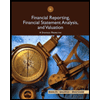 Financial Reporting, Financial Statement Analysis...FinanceISBN:9781285190907Author:James M. Wahlen, Stephen P. Baginski, Mark BradshawPublisher:Cengage Learning
Financial Reporting, Financial Statement Analysis...FinanceISBN:9781285190907Author:James M. Wahlen, Stephen P. Baginski, Mark BradshawPublisher:Cengage Learning Intermediate Financial Management (MindTap Course...FinanceISBN:9781337395083Author:Eugene F. Brigham, Phillip R. DavesPublisher:Cengage Learning
Intermediate Financial Management (MindTap Course...FinanceISBN:9781337395083Author:Eugene F. Brigham, Phillip R. DavesPublisher:Cengage Learning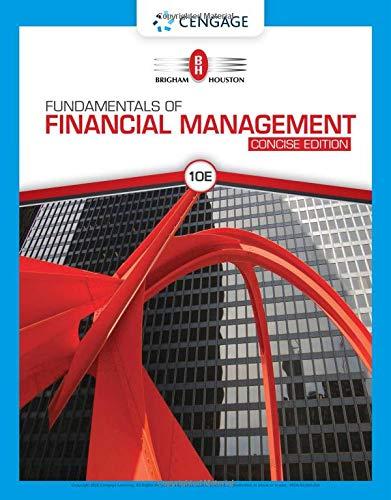 Fundamentals Of Financial Management, Concise Edi...FinanceISBN:9781337902571Author:Eugene F. Brigham, Joel F. HoustonPublisher:Cengage Learning
Fundamentals Of Financial Management, Concise Edi...FinanceISBN:9781337902571Author:Eugene F. Brigham, Joel F. HoustonPublisher:Cengage Learning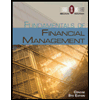 Fundamentals of Financial Management, Concise Edi...FinanceISBN:9781285065137Author:Eugene F. Brigham, Joel F. HoustonPublisher:Cengage Learning
Fundamentals of Financial Management, Concise Edi...FinanceISBN:9781285065137Author:Eugene F. Brigham, Joel F. HoustonPublisher:Cengage Learning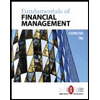 Fundamentals of Financial Management, Concise Edi...FinanceISBN:9781305635937Author:Eugene F. Brigham, Joel F. HoustonPublisher:Cengage Learning
Fundamentals of Financial Management, Concise Edi...FinanceISBN:9781305635937Author:Eugene F. Brigham, Joel F. HoustonPublisher:Cengage Learning





